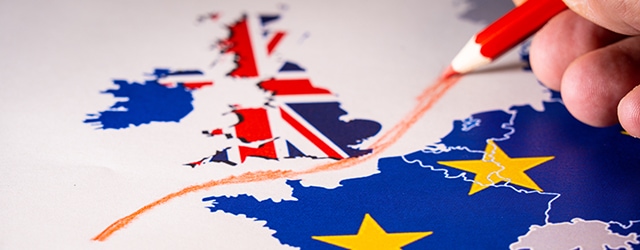Ireland,Luxembourg, the Netherlands and Cyprus all face significant Brexit risk.

The Republic of Ireland—which recentlytrimmed its GDP forecast for 2019 and 2020—tops S&P Global Ratings’ Brexit Sensitivity Index (BSI) ranking, a list of countries most exposed to economic aftershocks following the UK’s departure from the European Union.
The index was released just before the Irish government’s Department of Finance published its stability program update. “In aggregate terms, a disorderly exit would reduce the level of GDP by around 3.25% after five years, and 5% after 10 years, relative to a hypothetical scenario in which the UK did not exit the EU,” the ministry said.
S&P’s report went on to say that the negative impacts from Brexit will be most keenly felt in those sectors with strong export ties to the UK market such as agriculture, food, manufacturing and tourism sectors as well as small- to medium-sized enterprises and their suppliers. This coincided with the release of a paper from the Economic and Social Research Institute—an Irish research institute—which predicted Brexit’scost to output in 2019 would range between €1.8 billion ($2 billion) and €7.5 billion ($6 billion), regardless of whether the UK secured a deal with the EU before its departure.
Other countries topping the list are Luxembourg, the Netherlands and Cyprus, ranking second, third, and fourth, respectively. The index utilizes four metrics: goods and services exports to the UK; bidirectional migrant flows; foreign direct investment in the UK; and financial sector claims on UK counterparties. The last time S&P conducted this analysis was in 2016, two weeks before the Brexit referendum. Of the 10 countries with the greatest exposure to Brexit risk three years ago, nine remain on the list.
The biggest movement came from the Netherlands, which moved up four places to third place. Between 2015 and 2018, Dutch exports to the UK grew by 0.6% of the country’s GDP with Dutch banks carrying high exposure to UK counterparties. By contrast, Belgium, Germany, Irelandand Switzerland have cut their exposures to UK counterparties. However, this trend developed before Brexit, the S&P report said.
The only non-European country to make the list was Canada, which ranked 18th on the index. The US did not make the top 20 as the American economy is so large that its exposure toUK risk is relatively negligible. Canada’s financial claims on the UK make up an estimated 7.2% of GDP—down from 10.5% in the 2016 index.The only other non-EU country in the ranking is Switzerland. Swiss exposure to the UK came primarily via its sizable FDI holdings and large financial sector subsidiaries and branches in the UK.



